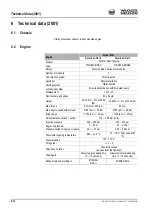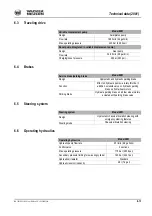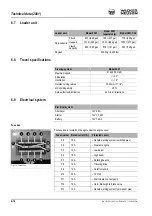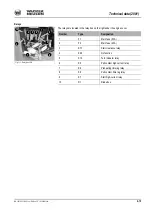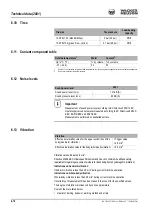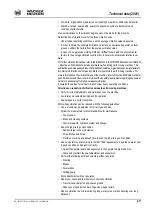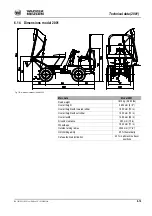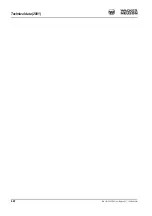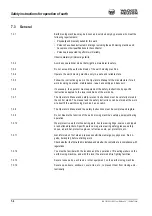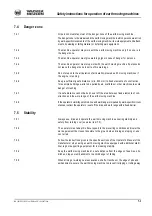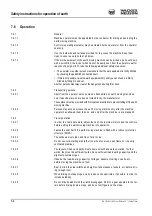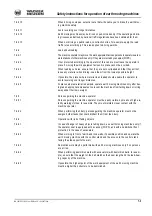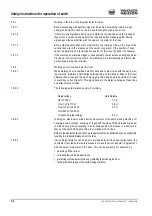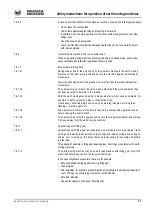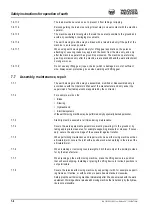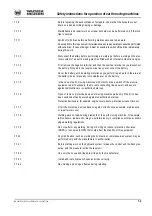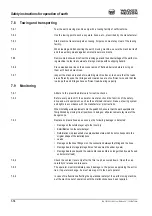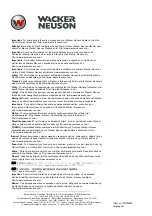
7-6
BA 1001/1501/2001 us – Edition 3.3 * * 12001b710.fm
Safety instructions for operation of earth
7.6.7
Working in the area of underground electric lines
7.6.7.1
Before excavating with earth moving machines, find out whether there are any
underground electric lines on the job site that might put persons at risk.
7.6.7.2
If there are underground electric lines, determine the positions and the routing of
these lines, and define and perform the required safety measures after having
agreed upon these activities with the owner or operator of the lines.
7.6.7.3
Before starting excavation work, clearly mark the routing of lines in the area of the
construction site in the presence of the owner or operator. If the position of lines
cannot be determined, dig trenches to search for the lines (by hand if necessary).
7.6.7.4
If the machine operator damages or unexpectedly comes across underground elec-
tric lines or their protective covers, he must stop work immediately and inform the
person supervising the activities.
7.6.8
Working next to overhead electric lines
7.6.8.1
When working next to overhead electric lines and contact lines with the earth mov-
ing machine, maintain a safe distance (depending on the rated voltage of the lines)
between these lines and the earth moving machine and its work equipment in order
to avoid any current transfer. This also applies to the distance between these lines
and attachments or loads.
7.6.8.2
The following safe distances apply in Germany:
Rated voltage
Safe distance
Up to 1000 V
1.0 m
Over 1 kV to 110 kV
3.0 m
Over 110 kV to 220 kV
4.0 m
Over 220 kV to 380 kV
Or unknown rated voltage
5.0 m
7.6.8.3
In doing so, also bear in mind all work movements of the earth moving machine, for
example boom positions, swinging of ropes and the size of hitched loads. Also bear
in mind uneven ground resulting in an inclined position, and hence in a shorter dis-
tance of the earth moving machine to overhead electric lines.
Both overhead electric lines and the work equipment can be deflected even by slight wind,
resulting in a reduced distance from the lines.
7.6.8.4
If no sufficient distance can be kept to overhead electric lines and contact lines, the
contractor must take other safety measures to avoid current transfer in agreement
with the owner or operator of the lines. This can be achieved, for example, by
• switching off the current,
• re-routing the overhead electric line,
• protecting overhead electric lines by installing them underground or
• limiting the work range of the earth moving machine.

